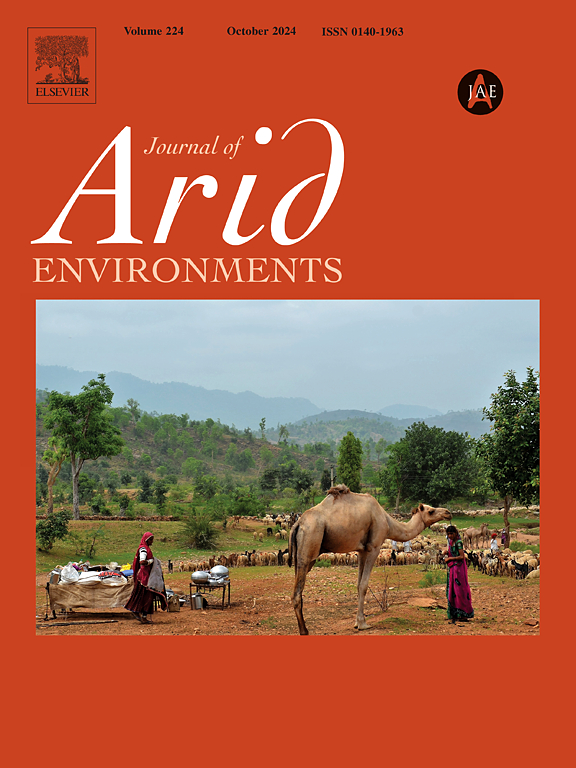The effect of climatic events and land-use land-cover changes on evapotranspiration in a semiarid region of South Africa
IF 2.6
3区 环境科学与生态学
Q2 ECOLOGY
引用次数: 0
Abstract
Climatic extremes remain serious threats to various processes of the hydrological cycle including evapotranspiration (ET). This study determined the spatial and temporal variations of ET for different land use land cover (LULC) types and the influence of certain climatic phenomena Western Cape. The study used Landsat 8 images, for ET estimation (with the Surface Energy Balance System (SEBS) and to map the various LULC types using Support Vector Machine during El Nino in 2015–2016, normal year in 2019–2020, and La Nina in 2020–2021. The results show an increase in ET during La Nina (2.39 mm/day) and El Nino (2.36 mm/day) years compared to the normal year (1.62 mm/day). The increase in ET during El Nino and La Nina years could be caused by the increased temperature and rainfall. Agriculture was the most prominent LULC type covering 62.87% and bare land was the least covering 0.64%. For the whole study period, water had the lowest ET (average of 2.72 mm/day in summer and 1.87 mm/day in winter), whereas agricultural land had the highest ET (average ET of 3.74 mm/day in summer and 2.17 mm/day in winter). These results highlight the effect of climatic events on water loss for water resources allocation especially during extreme climatic events.
气候事件和土地使用土地覆盖变化对南非半干旱地区蒸散量的影响
极端气候仍然严重威胁着包括蒸散作用 (ET) 在内的各种水文循环过程。这项研究确定了不同土地利用类型的蒸散发的空间和时间变化,以及某些气候现象对西开普省的影响。该研究使用大地遥感卫星 8 号(Landsat 8)图像进行蒸散发估算(利用地表能量平衡系统(SEBS)),并在 2015-2016 年厄尔尼诺、2019-2020 年正常年和 2020-2021 年拉尼娜期间使用支持向量机绘制各种 LULC 类型的地图。结果显示,与正常年份(1.62 毫米/天)相比,拉尼娜年(2.39 毫米/天)和厄尔尼诺年(2.36 毫米/天)期间的蒸散发增加了。厄尔尼诺年和拉尼娜年的蒸散发增加可能是由于温度和降雨量增加所致。农业是最主要的 LULC 类型,占 62.87%,裸地最少,仅占 0.64%。在整个研究期间,水的蒸散发量最低(夏季平均为 2.72 毫米/天,冬季平均为 1.87 毫米/天),而农业用地的蒸散发量最高(夏季平均为 3.74 毫米/天,冬季平均为 2.17 毫米/天)。这些结果凸显了气候事件对水资源分配中水损失的影响,尤其是在极端气候事件期间。
本文章由计算机程序翻译,如有差异,请以英文原文为准。
求助全文
约1分钟内获得全文
求助全文
来源期刊

Journal of Arid Environments
环境科学-环境科学
CiteScore
5.70
自引率
3.70%
发文量
144
审稿时长
55 days
期刊介绍:
The Journal of Arid Environments is an international journal publishing original scientific and technical research articles on physical, biological and cultural aspects of arid, semi-arid, and desert environments. As a forum of multi-disciplinary and interdisciplinary dialogue it addresses research on all aspects of arid environments and their past, present and future use.
 求助内容:
求助内容: 应助结果提醒方式:
应助结果提醒方式:


